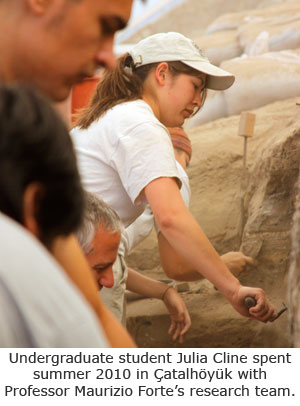

 Using cutting-edge scanners and computers, UC Merced archaeology Professor Maurizio Forteis able to reconstruct the past in 3-D.
Using cutting-edge scanners and computers, UC Merced archaeology Professor Maurizio Forteis able to reconstruct the past in 3-D.
Forte, along with graduate and undergraduate researchers, spent summer 2010 in Çatalhöyük, an ancient settlement in Turkey. The team used laser scanners to capture each layer peeled back by archaeologists. They also excavated artifacts and scanned them into a digital format that can be turned into a 3-D computer image. Those renderings can be manipulated and interpreted by scholars around the world.
“Every second, every day, we lose a lot of sites in the world,” Forte explained. “We are not able to preserve everything. What do we do? Well, we try to record and record.”
Forte and his students went to Turkey as part of a three-year collaboration with Stanford University, the Çatalhöyük Project and University College of London. Çatalhöyük is a well-preserved, pre-urban Neolithic site that's about 10,000 years old. Forte's team is the first to use 3-D techniques there.






